 |
||
CITSO Blog: "Licked" at Long Last!
Deer Lick Group (NGC 7331 and friends) in Pegasus
Imaged August 2 to September 3 2011
Processing completed June 2013
Click the image for the high resolution version!


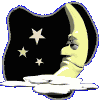


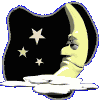






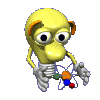




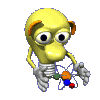










Deer Lick Group (NGC 7331 and friends) in Pegasus.
Imaged between August 2 & September 3 2011, 11 hours total.
Processing completed June 2013.
(What took me so long to "lick" the processing? The story follows!)
L=360 minutes (1X1), R=100m, G=100m, B=100m (all 2x2), Subs=10m.
Telescope=PlaneWave CDK17, Camera=SBIG STL-4020M, Mount=Paramount ME.
PlaneWave focal reducer (f/4.5). Baader filters.
Frames acquired with TheSky X, MaxIm DL, and Focusmax.
Processed with PixInsight and CCDInspector.
This is the result of 6 nights of imaging between August 2 and September 3 2011, but it wasn't until June 2013 before I finally completed the image processing!
So what took so long to "lick" the processing of the Deer Lick Group?!
First, some background to the story. It wasn't long after my adventures in astronomical imaging began that I first saw a rendition of this intriguing field of view (which might have been this APOD by Don Goldman), with the large spiral NGC 7331 lying at a shallow angle to our line of sight, and framed by much more distant galaxies that happen to lie in the same direction. The view evokes a powerful illusion of depth, looking out over the disk of the great spiral (some 50 million light-years away) and into the distance beyond. The diverse morphologies of the background galaxies also add much to the texture of the view. I hoped that I might one day have the skill and equipment necessary to make my own deep portrait of this scene.
(BTW, the odd moniker Deer Lick Group, by which this collection of galaxies is affectionately known, was coined by Tomm Lorenzin, author of 1000+ The Amateur Astronomer's Field Guide to Deep Sky Observing, "in commemoration of one of the finest nights of viewing EVER, at Deer Lick Gap, just off the Blue Ridge Parkway, in the North Carolina mountains.")
The summer of 2011 was the first full summer that we spent at the Cabin in the Sky, and in the weeks leading up to our departure from Vancouver in late June, I obsessed over my imaging plans. I thought there was a good chance that I could go "deep" (shooting for a minimum of 10-12 hours of exposure) on as many as four objects. I came up with a list of four very different targets, hoping to extend the range of my small portfolio of deep sky treasures.
And a helluva summer it turned out to be! I eventually bagged my four targets: the Bubble Nebula (NGC 7635), the Ghost Nebula (vdB 141), the Cave Nebula (Sh2-155), and finally the Deer Lick Group. August also turned out to be a glorious month of sunny pool-side days spent with family and friends. Here's a short video with Alexandre's cousin Zoe (who visited from Montreal with her mom Chrys, who can be seen briefly just behind the gate to the pool) and me conducting a Mentos eruption experiement. The videographer is Mehrdad (whose manly voice can be heard near the end), who drove up from Vancouver with daughters Avesta and Aryanna. My mother-in-law Georgia, who spent the summer with us (and who insisted on spending much of that time pulling weeds out of our lot!), makes a cameo near the beginning, watching from the pool, while Loula and Alexandre dash in front of the camera near the end.
Back to why it took me two years to process the Deer Lick Group. I generally have a much tougher time processing galaxies than other objects, and I don't think I've fully identified why this is so. Part of the reason must be that I haven't been able to capture many galaxies (I crave them, but we can only manage brief visits to the Cabin in the spring, which is galaxy season), and there is only one way to improve one's technique: practice! Every class of object has a unique set of image processing challenges, and in the case of galaxies, there is alot of intricate structure to be coaxed out of a small part of the frame. Anyway, I hate to admit it, but I was totally stumped by the image processing challenges of this field of view, and the fact that it has six prominent galaxies to deal with (not counting the dozens of "faint fuzzies" that litter the field), of all shapes and sizes, says alot about the origins of my struggles!
One particular weakness in my toolkit of that period, which was very consequential in the processsing of this target, reveals itself in two other images taken that summer, most notably in the Ghost Nebula, and to a lesser extent in the Bubble (though I made a personal breakthrough of sorts with the Cave, which I didn't process until the following February). The problem was that I had yet to develop an adequate technique for shrinking bloated or "big" stars (image processors refer to the process as "erosion"), especially those set against a nebular background. Bloating arises when the light from a star is bright enough to saturate a large group of pixels, giving the star an unnatural appearance, not just too big, but also too flat, and with a harsh edge. Bloated stars can dominate an image, detracting significantly from the impact of the deep-sky treasure that is the true subject of the portrait. With deep exposures, even stars that are not intrinsically very bright can end up looking quite unnatural. In the case of the Ghost, I was not satisfied with my effort to shrink the two most brilliant stars in that field, blue gems set against the lustrous brown nebula, but I thought the options were limited in an such extreme case, and I was happy enough with the image as a whole (mind you, I'm going to reprocess it one of these days!). At the time, I thought I was able to handle bloat in isolated stars, at least at some level, and couldn't understand how other astro-photographers did so much better, particularly in tough cases like the Ghost. As I worked on the Deer Lick Group, it became clear that I was missing something fundamental in my image processing technique. It would take alot more experimentation with several new images to come before I was able to develop a workflow that could treat bloat much more aggressively.
Erosion algorithms work by comparing the brightness of a pixel with others nearby: the value of a brighter pixel is changed so as to match the fainter ones. When skillfully done, the bright outer portion of a bloated star (including a portion of its halo) is replaced by an average of the surrounding region, which becomes the background to the reduced star; the edge of the star can also be smoothed to form a more natural transition to the background. The degree of "shrinkage" that is possible can be quite surprising. The trick is to do it gradually, carefully tuning the amount of erosion over several iterations - otherwise one will get a dark ring around the eroded star, which ends up looking like a doughnut, an effect that is even more unnatural in appearance than the original bloated star! It is easier to erode stars that are set against a black background, since flaws in the transition from a reduced star to an empty "canvas" are much less noticeable than if the star is set against a portion of a nebula or galaxy. Here's a detail from the final fully processed frame that features the brightest star in the field of view: for the panel on the left I omitted the erosion workflow that I developed, after much trial and error, to produce the end result shown on the right. (I show an example where stars are set against a galaxy further down.)

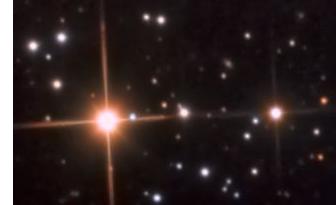
When I first set out to process my data for the Deer Lick Group, I was optimistic that it would go smoothly, since I had learned so much from working on the Bubble and Ghost. I didn't expect that erosion would be such a challenge in this instance, since much of the background in the frame is relatively dark. However, I soon bumped up against the limitations of my technique: when a galaxy is viewed through a crowded star field like this one, chances are that it will have a number of foreground stars superimposed on it, which if left untreated can detract significantly from its intricate structure. This is the situation in spades with NGC 7331! The two most prominent smaller galaxies also encompass a distracting foreground star, particularly the small face-on barred spiral. Try as I might, I could not erode these stars enough without leaving ugly doughnuts. How much erosion is enough? Well, one aspires to the high standards set by the most skilled astrophotographers who have captured the same target, even knowing that such results are beyond one's reach ;).
Another challenge with this frame is a faint nebulosity that fills much of the field (an example of so-called "Integrated Flux Nebulosity" or IFN), parts of which have interesting and delicate structures, including wisps that seem to cradle portions of NGC 7331, especially on the right (in the orientation that I've used here). I had a hard time bringinig out the IFN without "blowing out" the stars and galaxies.
Since I had waited such a long time for a crack at this beautiful field of view, I had to do better.
After several determined attempts at image processing in the fall of 2011, I reluctantly put the project aside. I tried again in the spring of 2012, and then a year passed before I came back to it once more, in May 2013. By this time I had a well-honed star erosion technique in my toolkit, earned the hard way, by doing lots and lots (and lots) of experimenting. I had also gained more experience with the high dynamic range compression tools of PixInsight, an incredibly powerful package of sophisticated image processing tools, and my software of choice; the HDRMultiscaleTransform and MultiscaleMedianTransform tools proved very useful in coaxing out the the IFN, not to mention the rich structure in NGC 7331!
The key to star erosion in PixInsight (for me anyway) is successive application of the MorphologicalTransformation (MT) tool, in concert with star masks that are customized for stars of different "size" (big, medium, small). More bloated stars benefit from applying a longer sequence of more gradual MTs, with a set of carefully tuned parameter values (harder or softer), through several different star masks (larger or smaller, harder or softer). The greater the nebular background, the more refined the process. My workflow is finished off with one or two rounds of UnsharpMask (perhaps one through a larger mask that fully compasses the stars in a particular size group, to get the edge transition right, followed by another application through a smaller mask, to treat the cores). And of course, patience is a must! Trial and error is the only way I know to explore the huge multidimensional parameter space of the PixInsight tools, and that takes time. Erosion is especially time consuming, what with optimizing all those MTs, all those star masks, and the UnsharpMasks, and doing so separately for different classes of star size. It doesn't help that I suffer from a serious case of PixInsight OCD, hunting for (but never finding) that elusive point in parameter space - the global maximum of image optimization across all parameters!
Judge for yourself whether the attention to detail is worthwhile, illustrated here by the small face-on barred spiral, with a bloated star landing in what could not be a more distracting location, smack between the galaxy's core and one of its spiral arms. These details are from identically processed frames, except that erosion was left out of the workflow on the left. Is the result on the right an improvement, or what?! But let me tell you, finding a workflow that could aggressively erode that star, without also eroding the heck out of the core and spiral arm, brought out the worst in my PixInsight OCD ;).

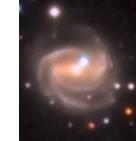
So anyway, in working on the Deer Lick Group I set a personal record (by leaps and bounds!) for patience and discipline (not my strong suits!). It paid to put the project aside, holding off until I was better able to deal with its challenges - not to mention having enough time to adequately explore the parameter space! One never truly reaches the end of an image processing workflow, instead the returns gradually diminish to the point where another challenge beckons, but in the end, I think I did "lick" the challenges of the Deer Lick Group ;).


Copyright © 2014 Howard Trottier





